
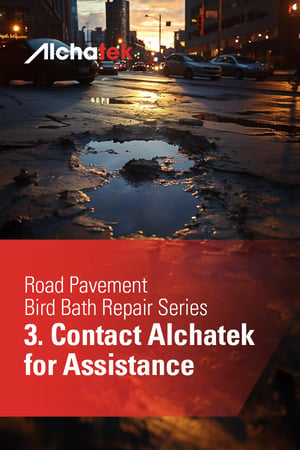 Before embarking on any bird bath repair project using the Deep Lock® process, it's crucial to consult with industry specialists. The Alchatek support team, with extensive experience in advanced pavement repair techniques, offers invaluable insights for assessing site conditions, choosing appropriate materials, and implementing effective repair strategies.
Before embarking on any bird bath repair project using the Deep Lock® process, it's crucial to consult with industry specialists. The Alchatek support team, with extensive experience in advanced pavement repair techniques, offers invaluable insights for assessing site conditions, choosing appropriate materials, and implementing effective repair strategies.
In addition, Alchatek has established connections with skilled contractors proficient in the Deep Lock® process. Ask for referrals to trusted professionals who ensure the safe and efficient execution of your pavement repair projects.
Partner for Success
Don't leave the durability and safety of your roads to chance. Partner with Alchatek to harness the full potential of the Deep Lock® process for your bird bath repair needs. Our expertise in advanced road repair techniques makes us the ideal ally in ensuring long-lasting and effective solutions.
Reach Out Today
To learn more about how Alchatek can assist in your road repair projects or to get connected with experienced contractors, contact Alchatek.
Call 404-618-0438 or fill out this form to contact Alchatek today!



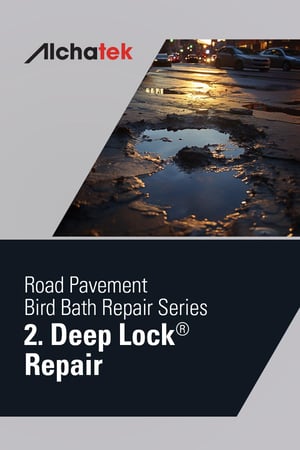 In the previous post, the causes and consequences of bird baths in road pavement were explored. Now, attention will turn to an innovative solution for repairing these issues: the Deep Lock® process.
In the previous post, the causes and consequences of bird baths in road pavement were explored. Now, attention will turn to an innovative solution for repairing these issues: the Deep Lock® process.
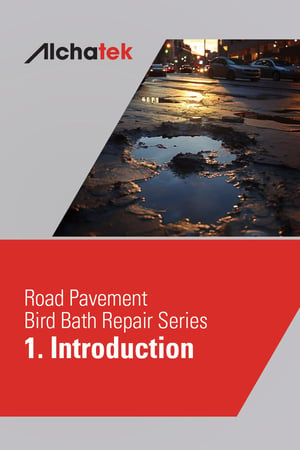 Have you ever noticed shallow, pond-like formations on the surface of roads, particularly in private neighborhoods, subdivisions, or parking lots? These are known as "bird baths" in the road surface, and they're more than just a quirk of the road. They signify deeper issues in road maintenance and safety that are crucial to address.
Have you ever noticed shallow, pond-like formations on the surface of roads, particularly in private neighborhoods, subdivisions, or parking lots? These are known as "bird baths" in the road surface, and they're more than just a quirk of the road. They signify deeper issues in road maintenance and safety that are crucial to address.
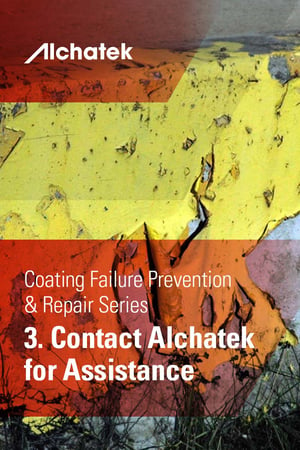 Addressing the complexities of coating failure requires more than just a superficial understanding of the issue. It necessitates a deep dive into the technical aspects and an experienced partner to guide the process.
Addressing the complexities of coating failure requires more than just a superficial understanding of the issue. It necessitates a deep dive into the technical aspects and an experienced partner to guide the process. 


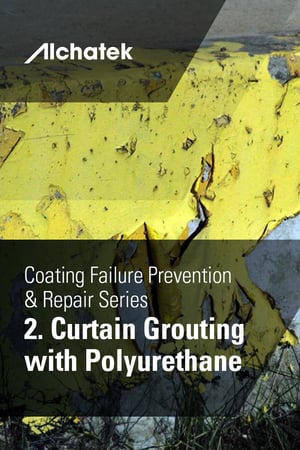 In the field of coating failure solutions, curtain grouting with polyurethane is very effective, especially in scenarios where water intrusion is a primary concern. Curtain grouting is an effective method that not only addresses existing coating failures but also acts as a preventive measure.
In the field of coating failure solutions, curtain grouting with polyurethane is very effective, especially in scenarios where water intrusion is a primary concern. Curtain grouting is an effective method that not only addresses existing coating failures but also acts as a preventive measure.
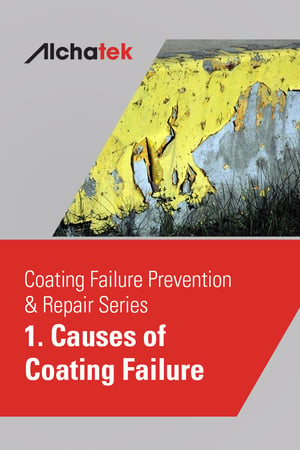 Coatings are more than just a cosmetic layer on a structure; they play a vital role in protecting buildings from various environmental factors. Essentially, a coating is a layer of material applied to the surface of an object, intended to protect, decorate, or add functionality. In terms of structural integrity, coatings serve as a barrier against moisture, chemicals, UV radiation, and mechanical wear. They prevent corrosion, enhance durability, and ensure that the underlying material, such as concrete, metal, or wood, remains unharmed by external elements.
Coatings are more than just a cosmetic layer on a structure; they play a vital role in protecting buildings from various environmental factors. Essentially, a coating is a layer of material applied to the surface of an object, intended to protect, decorate, or add functionality. In terms of structural integrity, coatings serve as a barrier against moisture, chemicals, UV radiation, and mechanical wear. They prevent corrosion, enhance durability, and ensure that the underlying material, such as concrete, metal, or wood, remains unharmed by external elements.
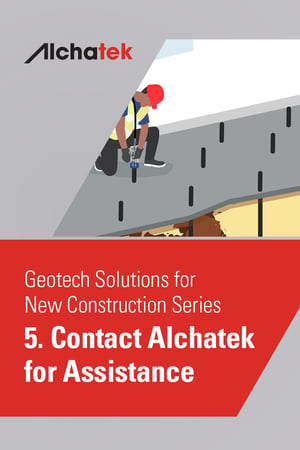 Polyurethane foam can be used in a variety of new construction projects, from road widening to zero lot line excavation projects to a variety of complex excavation and foundation support scenarios. The use of polyurethane stabilization techniques provides clear advantages like cost-effectiveness, strength, and versatility across a wide range of situations. However, properly implementing them requires extensive technical expertise in assessing site conditions, selecting the right materials, and creating effective injection plans.
Polyurethane foam can be used in a variety of new construction projects, from road widening to zero lot line excavation projects to a variety of complex excavation and foundation support scenarios. The use of polyurethane stabilization techniques provides clear advantages like cost-effectiveness, strength, and versatility across a wide range of situations. However, properly implementing them requires extensive technical expertise in assessing site conditions, selecting the right materials, and creating effective injection plans.

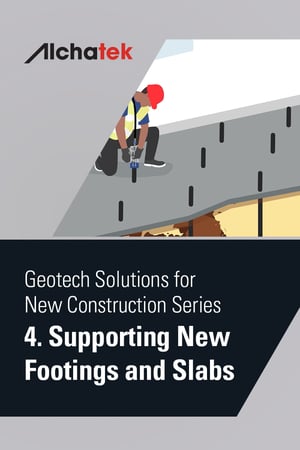 In new construction projects, establishing a solid foundation for footings and slabs is crucial, especially in challenging soil conditions. Polyurethane foam offers a groundbreaking approach to improving soil stability, a key factor in the longevity and safety of new structures.
In new construction projects, establishing a solid foundation for footings and slabs is crucial, especially in challenging soil conditions. Polyurethane foam offers a groundbreaking approach to improving soil stability, a key factor in the longevity and safety of new structures.
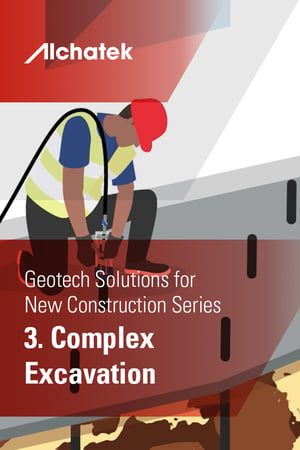 As construction excavation projects continue to push the boundaries of complexity, innovative solutions are needed to ensure safety and stability. Polyurethane foam has emerged as an indispensable tool for these unique challenges. With a dual capability to stabilize soil and complement traditional retaining methods like sheet piling or secant walls, polyurethane foam provides robust support precisely when and where it is most needed. Whether plugging gaps to prevent infiltration, enhancing structural support, or sealing out soil in deep foundation pits, this versatile material enables advanced excavations that would otherwise be extremely risky if not impossible.
As construction excavation projects continue to push the boundaries of complexity, innovative solutions are needed to ensure safety and stability. Polyurethane foam has emerged as an indispensable tool for these unique challenges. With a dual capability to stabilize soil and complement traditional retaining methods like sheet piling or secant walls, polyurethane foam provides robust support precisely when and where it is most needed. Whether plugging gaps to prevent infiltration, enhancing structural support, or sealing out soil in deep foundation pits, this versatile material enables advanced excavations that would otherwise be extremely risky if not impossible.
 Excavating near existing structures, particularly in zero lot line scenarios like building additions, poses unique challenges. Traditional methods like sheet piling, while effective, can cause issues such as adjacent structure disruption, soil settlement, and excessive noise, making them less ideal in dense, urban environments.
Excavating near existing structures, particularly in zero lot line scenarios like building additions, poses unique challenges. Traditional methods like sheet piling, while effective, can cause issues such as adjacent structure disruption, soil settlement, and excessive noise, making them less ideal in dense, urban environments.